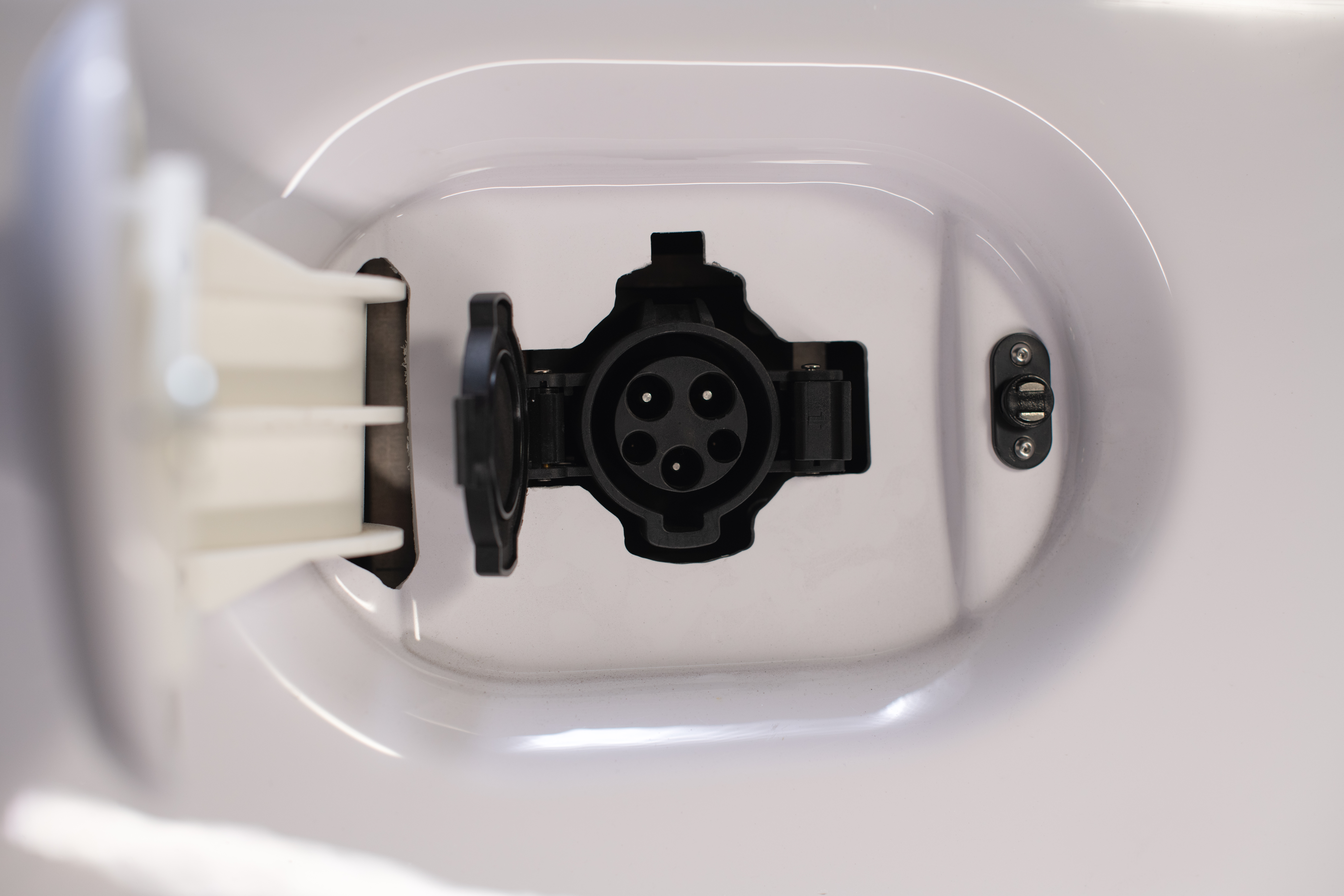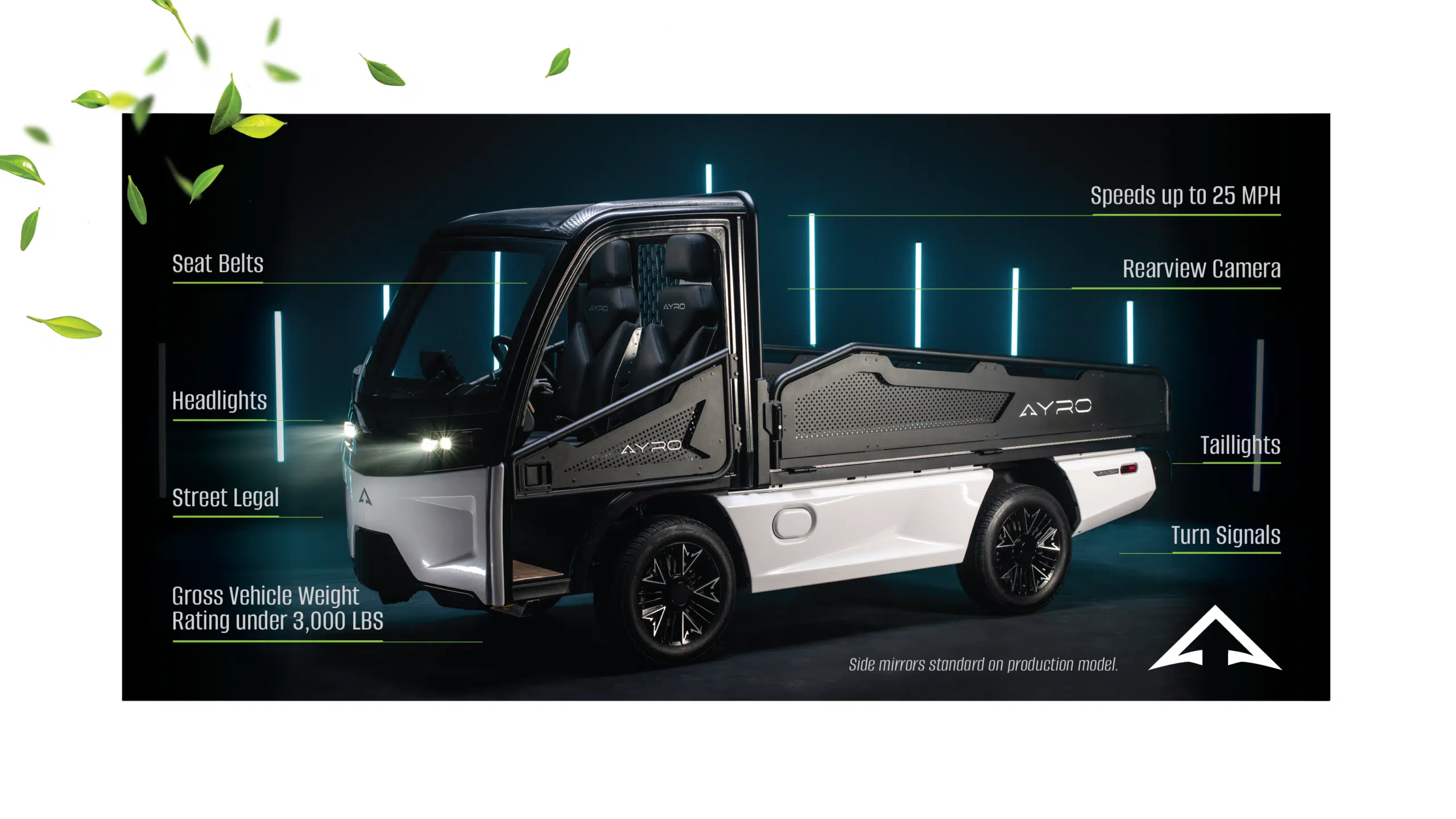What is a Low Speed Electric Vehicle?

The AYRO Vanish is a cutting-edge transport centered around innovation and sustainability…. But what IS it, what makes it different from other electric vehicles, and how does it alter the landscape of delivery and distribution?
Out of the Past and Into the Future
As we traverse the roads, it’s impossible to miss the vast array of vehicles that populate our streets. From cars and vans to SUVs and trucks, in every color and configuration imaginable, the evolution of vehicle design over the last century has catered to a wide variety of personal and commercial needs. Now, however, the focus is shifting towards sustainability, as we seek to balance innovation with the environmental impact of a century-long history of auto manufacturing and emissions.
The LSEV
That’s where Low-Speed Electric Vehicles (LSEVs) come in. Much of what they are is right there in the name, but the regulations and applications are more complex. The National Highway Traffic Safety Administration defines Low-Speed Vehicles (LSVs), which includes LSEVs, as four-wheeled motor vehicles with a gross weight of less than 3,000 pounds and a top speed of between 20 and 25 miles per hour. Most states allow low-speed vehicles to operate on roads where the posted speed limit is 35 MPH or less. Being on the road with ‘regular’ vehicles means that federally mandated safety requirements are built-in to road-worthy LSEVs. These include seat belts, head and tail lights, brake lights, turn signals, reflectors, mirrors, parking brake and windshield.
A Class of Their Own
Though there are many similarities between LSEVs, LSVs, golf carts, and electric passenger vehicles, there are also some key distinctions. What separates LSEVs from regular low-speed vehicles with combustion engines is, of course, the electric power train. While there are some similarities, the designs and applications of LSEVs are very different than electric passenger vehicles like the Tesla S3 or Toyota Prius, which are meant to fill the need of standard commuter cars on main roads over high speeds and long distances. There are also differences between LSEVs and golf carts, which are the most frequently compared small electric vehicles.
Golf carts, originally meant simply to move people and their clubs on the green from one hole to the other, have become more common in recent years as a way for people in smaller communities such as subdivisions to move around easily. While golf carts are great for those purposes, they are limited by law and design as to what they can do. For example, golf carts are not really meant to traverse more than smooth roads and slowly rolling hills, and the legally allowed maximum speed is only 15 miles per hour. And, unlike an LSEV, they are not required to have any of the required safety features for use on public roads or in cities. So, while golf carts may seem more convenient and often cheaper, the potential uses of LSEVs are far greater and more flexible.
Benefits to using LSEVs
The key advantages of LSEVs, in contrast to combustion engine vehicles, are their zero emissions and utilization of a sustainable fuel source. These qualities hold significant importance, but there are also a number of lesser known benefits.
LSEVs are well suited for the short trips around neighborhoods, city blocks, or manufacturing complexes because they’re:
- Less expensive to operate in terms of fuel and maintenance
- Quiet – No or low noise
- Easy to navigate and park
- Equipped with increasingly greater payloads and ranges as technology improves.
Perhaps the most attractive aspect is that their electric power train is ideal for the constant stopping and starting required in the most common applications for LSEVs, namely campus mobility, last-mile delivery, and micro distribution.
Tax, tag, title, and legal compliance
As previously stated, most states allow use of LSEVs on all roads with a speed limit of 35 miles per hour or less. To operate on public roads, however, LSEVs operators do need to comply with tax, tag, title, and insurance requirements. With the increasing use of such vehicles on public roads, most states and municipalities have made the processes the exact same as for regular passenger vehicles. As you consider adding LSEVs to your inventory it is best to check with your respective local governments and agencies to ensure compliance within your area/region.
Safety First!
The safety features mandated for LSEVs means that they have many of the same features as regular full-sized vehicles. Due to their lower operating speeds and the controlled environments in which they are permitted to operate, there is a reduced likelihood of these vehicles being involved in serious accidents with other vehicles. Similarly, the lower speed, often accompanied by improved driver visibility, may contribute to their enhanced safety when in the presence of pedestrians.* The inclusion of features such as doors, bumpers and rear-direction cameras in most LSEVs also enhance safety. Their no-emissions operations means that they can be used indoors or outdoors in applications where air quality and noise level concerns would make use of combustion engine vehicles dangerous or impossible.
The Future of LSEVs
According to a Lucintel market report, within the next five years the LSEV market is expected to reach $13.1 billion, with an annual growth rate of 5.1%. As growth and competition increase, consumers are increasingly seeking sustainable designs that deliver value and minimize environmental impact. AYRO designs and produces zero emissions vehicles and systems that redefine the very nature of sustainability. Our goal is to craft solutions in a way that leaves minimal impact on not only carbon emissions but the space itself. From tire tread, fuel cells, sound, and even discordant visuals, we apply engineering and artistry to every element of our product mix.
*The driver should remain attentive to traffic, surroundings, and road conditions at all times.


